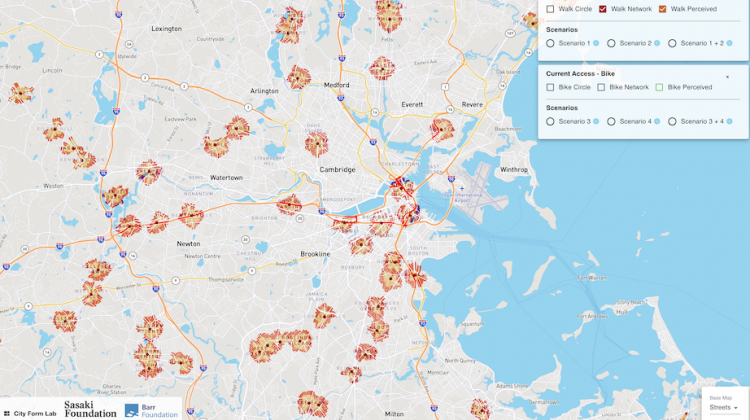Transit Access: Improving Walking and Biking to Commuter Rail Stations in Greater Boston

Pedestrian- and bicycle path-choice studies have shown that people's perception of distance can substantially differ from objectively measured distance. For instance, walking along routes with high traffic volumes and speeds tends to make the walk feel longer than it is, while passing by ground-businesses or greenery makes distance feel shorter. Similarly, having quality bike paths makes biking distances feel shorter, while having to bike against traffic has the opposite effect. Using behavioral findings from prior studies (1,2), the maps below illustrate how much smaller the perceived ~10 minute walk- and bike-sheds are compared to the “network” and “as-a-crow-flies” catchment areas around current commuter rail stations around in the system. All walk-sheds are mapped using a ½ mile distance, bike-sheds using a 1½ mile distance. It is within the “perceived” catchment areas—particularly the “perceived” ½ mile walking zones—that people “feel” they can get to stations within approx. 10 minutes with non-motorized transportation, delineating critical areas for Transit Oriented Development and transit-improvement impacts.


